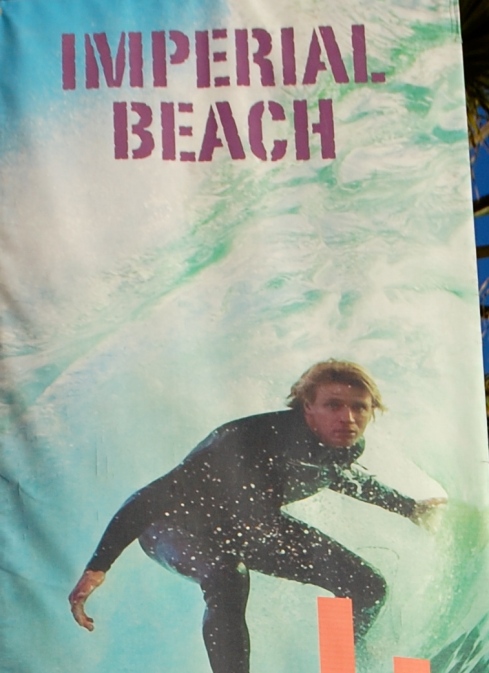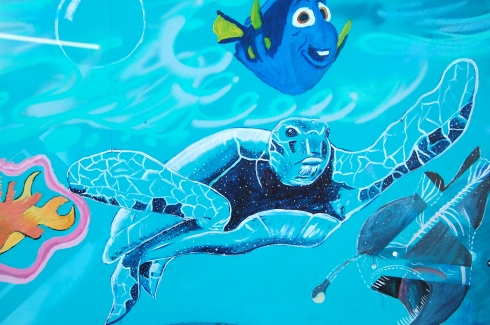
The surf tripled in size on Saturday March 1st and by the end of the day was breaking out past the Imperial Beach Pier.
On Saturday March 1, 2014, the surf from an unusual almost Hurricane like storm (in its appearance) battered the coast of Southern California. The surf went from 3-5′ on Saturday morning to more than 10-15′ on Saturday afternoon. High tides and surf that evening resulted in coastal flooding in Imperial Beach and up and down the California coast (especially in the Santa Barbara area).
Swell forecast for Imperial Beach.
In Imperial Beach this swell combined with high tides to create coastal flooding. Surf topped over the sand berm along the beachfront especially in the Cortez/Descanso area and at the Palm Avenue Jetty. On Saturday afternoon surf broke well past the Imperial Beach Pier and over a mile offshore on distant reefs.

With high surf and high tides on the evening of March 1st, water came over the beach and into Seacoast Drive. Here is the end of Descanso Street the morning of March 2nd.

The end of Palm Avenue, March 2nd. Flooding worsened here during the morning high tide of March 2nd.
































![P1010827[1]](https://sergededina.files.wordpress.com/2012/10/p10108271.jpg?w=535&h=299)


![Rebar (2-5-05)[1]](https://sergededina.files.wordpress.com/2012/10/rebar-2-5-051.jpg?w=386&h=636)

![P1010825[1]](https://sergededina.files.wordpress.com/2012/10/p10108251.jpg?w=536&h=300)


